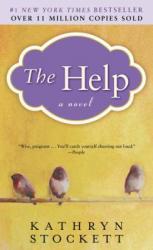
After watching the critically acclaimed movie I could not help but read Kathryn Stocket’s book, The Help. Watching the movie before reading the book is something I rarely do, and I knew the book would be better in this case, but I underestimated just how good the book would be.
The Help takes place in the 1960s and is a about a girl named Skeeter who wants to write a book about the African Americans who help in white households. However, different chapters are narrated by different characters so each character has somewhat their own story within the story.
This may be a bold statement, but The Help is my favorite book I have ever read. As an avid reader, I loved how long the book was. The book did not seem to end and the characters were so interesting, I didn’t want it to. Stocket’s writing abilities are phenomenal and the fact that each character was so distinctly different from one another was very impressive. I enjoyed the different chapters being narrated by different characters so much since I got to see what each character was thinking and feeling. I also loved the descriptions in the book. It wasn’t so descriptive that it got boring but
it also wasn’t so little that you couldn’t picture the situation. It was the perfect amount and it added to the reality of the story so well.
Overall I would highly recommend this book, especially for long summer reading. The only thing that I can think of that wasn’t great about the book were two specific chapters. They weren’t awful, I just felt that the book could have easily done without them. But obviously they didn’t really take away from the story and I still adore this book.
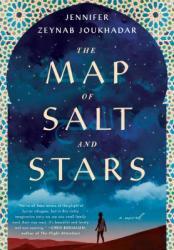
You know you have come across an extraordinary book when you find yourself thinking about its beautiful story and characters several months after you have first read it. I first read this beautiful novel back in February when I received an ARC of it from the publisher, and today I still think of the book and its beautiful characters of Nour and her family as they flee their homeland, Syria in 2011, and become refugees venturing across several middle eastern countries as the situation becomes more and more unstable and the violence ever more brutal. Shifting between past and present, in a second duel story-line that takes places more than 800 years earlier in Medieval Syria, Jennifer Zeynab also tells a harrowing tale of a girl named Rawiya, her desire to see the world, her very real clash with supernatural myth, and her adventures with a famous cartographer.
Jennifer Joukhadar through the fictional characters of Nour and her family, discusses a relevant and timely topic of the experience of many refugees that flee persecution and violence. She also does it in a way, that is, for the most part, unbiased choosing to focus instead on the everyday human experience of a family, instead of political ideology, which is very refreshing in today’s global climate.
The atmospheric and beautiful prose are a delight to read as we get to experience the world the way Nour and Rawiya saw it through beauty, sorrow, color and light. The character development of Nour, as her personal identity and her idea of what home is shifts as her journey progresses through time and years, is especially strong as she reflects on all she has lost and gained. Though the character development of Rawiya, shows a progression and change as her journeys around the world challenges and changes her perspective on life, I do not think it was as strong as the story of Nour and her family. And though Rawiya’s story-line was beautiful and entertaining, I felt it sometimes took away, from what I think of, as the central story-line of Nour and her family’s refugee experience.
That issue aside, this novel which is rich with historical and mythical detail, was in my opinion, several steps above the rest as it tackled a relevant, continuous, and difficult issue with beauty, grace and a truly memorable story. This novel, it has been said, does for Syrian Refugees what the Kite Runner did for Afghan refugees and in my opinion, it is a fair and correct comparison.
Thank you to the publisher Touchstone Books for an ARC of this beautiful novel for review! If you have not yet, please put this book on your holds list, it is so beautiful!

Mark Twain's beloved nineteenth-century novel is a thrill. Tom Sawyer is the story of a boy that everyone can relate to. From being bored in Sunday school to playing pranks on the teacher to running away and playing pirates, Tom Sawyer is full of boyhood adventures. The Adventures of Tom Sawyer is filled with comedy, warmth, and youthful innocence. However, below the surface, The Adventures of Tom Sawyer is about young boys facing the cruel adult world. This novel is truly a classic and can be enjoyed by all ages, especially upper elementary, middle schoolers, and high schoolers.
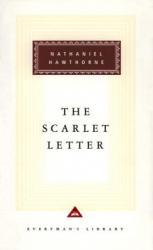
Rich with symbolism and human feeling, the compassionate author leads us to consider deepest plumes of human sentiment. We are artfully led by the hand into the inner corridors of human hearts, where we are taught to stare down passion, shame, despair, revenge and finally courage.
First, we are compelled to walk around in a world where there is no forgiveness. We are removed from the fresh and life-giving promises of scripture to a stale and unrelenting universe, a universe in which once you have sinned in certain ways, you are branded for life. Hawthorne’s world takes the world of Jesus and turns it upside down. Where Jesus welcomed the repentant prostitutes and the reformed tax collectors and had his very harshest words for the proud, exacting Pharisees, in Hawthorne’s world the town’s peoples’ sins of unforgiveness and pride are smugly overlooked.
Hawthorne’s world does to us what all good fiction ought to do: it causes us to shudder. We feel instinctively the cruelty of the sentence placed upon the young woman and the baby, although we acknowledge her sin. This should lead us to praise our God for the forgiveness and grace that is so freely offered us in scripture. As the Pharisees ask Jesus what they should do with the woman caught in the act of adultery (and where, I always wonder, is the man?), we should know his response: “Let him who is without sin cast the first stone.” John 8:7
Yet we come to appreciate the large-heartedness of Jesus all the more as we come to live in the world of Hester Prynne. Hawthorne, understanding the longing that we all feel to be welcomed and loved unconditionally within a society of people, haunts us with the solitary and scorned life Hester Prynne is relinquished to. As we sink deep into the mire of her forlorn pit, our hearts should soar all the more with the blessed promises of our great God:
“Remember that you were at that time separated from Christ, alienated from the commonwealth of Israel and strangers to the covenants of promise, having no hope and without God in the world. 13 But now in Christ Jesus you who once were far off have been brought near by the blood of Christ.” Eph 2:12,13
As we walk around in Hester Prynne’s world, we know what it would be like to be separated from Christ, to be alienated from the commonwealth of Israel, to be cut off from the promises of God. And yet we rejoice, because we know by faith that Hawthorne’s world is a skewed, twisted world, bearing no resemblance to the true community of faith.
Hawthorne’s character Dimmesdale is as unlike to Christ as nearly any man can be. Dimmesdale’s portrayal of failed manhood is so epic, I can scarcely think of another rival in literature. Here we see a man so small, so petty, so devoid of the smallest scrap of courage or courtesy, that he sits back passively allowing a woman to not only care for, love, and instruct his child alone, but also do so while laboring under the unrelenting sorrow of his shame. He sees this woman daily scorned, reviled, despised, belittled, made an object of while he walks around enjoying his position of influence and respect in others’ eyes. The fact that his sin daily eats away at him till his health is completely deteriorated does not make him any less pathetic in my eyes. No, he is the more pathetic for it. For he shows none of the manly dominance over human affairs that God gave to Adam when he blessed him and gave him dominion over the world. Instead, Dimmesdale is a peon, a victim of circumstance, a shadow of man, resigned to say simply “come what may,”
devoid of action and refusing to take responsibility at every turn.
What a striking contrast to our mighty savior. It is the man Jesus Who in all things takes the initiative. Jesus takes the shame for sins He never committed. Jesus stands up and takes our punishment. Jesus bears all our sorrow and our shame. Jesus, though perfect, identified himself with the lowly, with sinners and allowed himself to be crucified in the most undignified and hideous fashion, next to violent criminals. Jesus, instead of leaving a woman to lonely sorrow while he enjoyed respect, became a man of sorrows, well acquainted with grief. (Is. 56)
Is the Scarlet Letter a book for today? Why else does abortion flourish today except that we are plagued with a generation of Arthur Dimmesdales walking our streets? We have everywhere men who will not take responsibility for their actions and protect the children they have carelessly fathered.
Instead, they take their women to the clinic in the shadows and leave them to the abortionist scalpel, which brands hearts with a letter so hot and scarring, only the red-hot blood of Christ will heal.

I feel the same way about this book as I do certain of my favorite foods: I absolutely love it but I can understand why someone else wouldn't. The very distinctness of this book is what makes it so lovely. If you're looking for an action-packed page-turner, keep looking. This is a book to be savored.
On the pages of Gilead, I was confronted with the transcendence, the miracle that is everyday life. The author beckoned me to see the smallest detail of existence as a thing to be cherished. I found myself deeply moved by the quiet steadiness of a man who had lived in one small, inconsequential town his whole life. He wrote no great books, and made no national waves, but he was faithful and content. What a concept! Yet he fought real battles! They were the struggles he waged in his own heart. For instance, he fought hard to love the wayward son of his best friend who had caused the family so much grief for decades, and had now returned. But in the end, he rose as a victor, and gave a blessing so moving it could change the course of a life. He had struggled for decades with loneliness. While his best friend had a household of eight kids, he had remained wifeless and childless for years after his first wife had died in childbirth. But this eventually served only as a platform to make him a stronger and more sensitive man--a man able to love more deeply because of all his heartache. All of this is described so skillfully, so carefully, that the reader cannot help but love all that the author loves. And what else is a good story for if not to capture the affections?
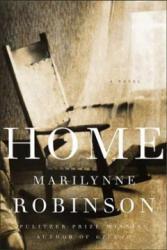
This book is not some trite, feel-good, cliche-gushing, sappy-ending kind of book. I'd say rather, Robinson portrays a little love for Flannery O'Connor in her writing. But a reader must remember that an author writes this way, not always to be dark for darkness sake (like Poe), but to sketch the world as she believes it really is. Home portrays the world as a messy place, with the messiest of all places on earth being the human heart.
Jack Boughton has wandered the world for 20 years as the wayward son of a faithful pastor but returns back home, just before his father passes away.
Jack relives much of his childhood as he returns to this home he has been gone from his whole adult life. Here he must face the remembrance of not belonging to something lovely, something he was and still is cut off from. He sees how a darkness in his heart has kept him from the light, the warmth, the fondness of family love. He has been a heartache to his parents and this he hates. But hating oneself is not the same thing as redemption; neither is regret; neither is simply making a physical trip to one’s childhood home, nor caring for your father for the last few weeks of his life. Reminiscing with your little sister and visiting all your old haunts, no, none of these things alone makes for redemption. It is much more complicated than all of that, and can only happen in the heart. Like many good books, the reader is not given a pat, 5-step plan. The path is left ambiguous. But we are only given hints. Jack whispers one of the deepest longings of every human heart, when he says to his father under his breath, “Bless me, even me also, O my father.” (From Genesis 27:34)
There is no tidy reconciliation scene between father and son, although Jack at one point tries to fake a change in his beliefs to ease his father's last days, but his father sees right through it. However, before the book ends, Jack receives a blessing from his namesake, his father’s best friend, and this is where the unexpected power to both forgive and to claim a promise, pierces through the binding darkness that Jack on his own could never have escaped.
A father who loves unconditionally a wayward son, and a life-long family friend who intercedes between a father and a son who love each other but can't understand each other, these two things are among the strongest forces on earth.

We all read in order to see through someone else’s eyes, C. S. Lewis has famously remarked. Jayber Crow is a novel that opens one’s eyes to the little-known world of living in backwoods obscurity, with all its glories and hardships. This is a world that is forever cut off from the majority of city-dwelling America, because one realizes that to truly enter into one such community, one must be born there.
After Jayber’s aunt dies, 11 year-old Jayber is sent to live at an orphanage, but never feels at home. After graduating, he wanders some, taking a job as a barber in a city, but always he feels out of place. Finally, he makes his way back to his tiny hometown where he is immediately recognized, helped, and accepted. Being back there, he feels a connection to his young parents who died when he was 4, and to his loving great aunt who took him in until she died when he was 11. People in the town of Port William remember his kin, and immediately see Jayber as one of them. He never leaves.
Jayber spends his whole life as the town barber, which involves much more than cutting hair. Listening to people’s stories and watching their lives, Jayber becomes part of something greater—a community built on permanence and unconditional love. That’s not to say that all is rosy in this little community. Jayber struggles with questions about God that he can’t find easy answers to. He also deeply loves a girl that ends up in an unhappy marriage to an unfaithful and foolish man, and he grieves for her, wishing more than anything that she could be happy. He grieves for her when her children’s lives bring her much pain through various tragedies. But ultimately, Jayber matures and changes throughout the book by learning the value of honest hard work, contentment and faithfulness to one’s word.
These are truly small-town values that are shown for all their worthiness in a setting that will draw you in and make you thankful for the time you got to spend in Port William, Kentucky.
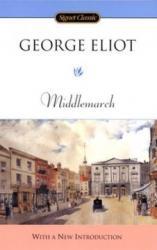
Few novels have the ability to do several things at once, and do them well:
invoke a strong sense of place, bring characters to brilliant light, create a plot that intrigues, and allow all three of these elements to weave together into a pattern that is simultaneously beautiful, heart-breaking, and resonating with every day life. But Middlemarch achieves these things effortlessly. A small, provincial village, with all its petty pursuits, its bickering, its politics, but also its small acts of heroism, soon has the reader feeling as if he knows this place to well; it could almost be his home.
The real draw of the book however is the depth to which each character becomes known to the reader, known better than we know our friends, and maybe better than we know ourselves. Only a master novelist can peel back the layers of a character's mere actions and reveal the motivations of the heart.
She doesn't just show us unhappy marriages, she shows us why they are unhappy. Pettiness and self-absorbtion consumes some, kindness and devotion are what others live for.
I highly recommend this piece of superb literature for its insight into the relationship of the sexes, and how things can go wrong, and how things can go right. She doesn't shy from the ugliness of relationships, while also showing how much good can be done to one whose heart is devoted to goodness.
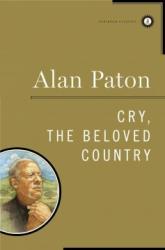
The mystery of unbelief and rebellion and the misery that flows flows from it, is a great theme in scriptures and is played out painfully and powerfully in this epic novel. The questions surrounding unbelief, the pain to all who witness lives unraveling, and the consequences that lead to death can never be expounded upon simply. They are mysteries without simple answers.
In this profound book, some are driven to evil and misery by poverty and social injustice. But others, particularly two of the main characters, choose dark paths when they have been given every opportunity out. Light and life are offered but they follow after death and darkness.
Although this is story set in South Africa, it bears meaning for all time.
All are offered living water. "Come to me all you who thirst, come buy and eat, without money and without price." But many will not come. The dog returns to his vomit and sow to wallowing in his mud. To those who have tasted of the everlasting water, to those who know life and light, this remains among life's greatest mysteries. Everyone is offered cleansing waters of forgiveness, they are offered an eternal pardon, they are offered everlasting joy, they are offered peace and hope, but they love the darkness.
And they suffer for their choice as their life unravels thread by thread, and they bring grief upon grief on everyone who loves them. But they do not care and they do not turn. And Jesus wept over Jerusalem saying: "How often would I have gathered your children together as a hen gathers her brood, but you were not willing."
A father weeps over a son and a sister, and as he weeps, he participates in the weeping of Jesus over Jerusalem. And yet, there is one in the story who flees corruption.
The ultimate crisis of this story takes place in the heart of the old priest who has led a faithful life. For darkness is predatory and never at rest, but it creeps and pursues and desires to consume and devour and distinguish all light. Will the priest be overtaken by hopelessness and despair and fear in his darkest hour? Will anger and perplexity and grief have the final word in his bereaved heart? Where will he turn to comfort? The darkness will not stop pursuing him and will not be content until he too has lost his joy in life.
How will he fight? What will he hold on to?
Highly recommend.
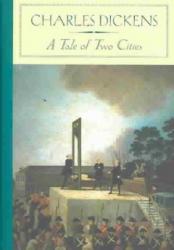
Profound human love and the most repugnant savagery, horror and redemption, a heroine and a grotesque revenger, two families with dark secrets, two cities, all in the backdrop of the bloodbath that was the French Revelation. In reading it, be prepared for the "Best of Times and the Worst of Times."
Like all great stories, the brilliance of this tale is its ability to not only intimately draw us into the tangled lives of these characters, battered by the historical tyrannies of their time, but to use their story as a parable to understand the human narrative as a whole. Perhaps this is why Dickens believed this book to be his magnam opus; perhaps he felt like it was his clearest statement of what he believed.
The struggles of a small family open the reader's eyes to understanding the larger struggles of humanity in general. We learn not only about the turmoil and violence plaguing France at the time of the French Revolution, but the sin and darkness plaguing our human race. Through this story, we understand principles which will prove true for all times and all places. Dickens writes that the evil cruelty of the French aristocracy gave birth to something according to its kind, the French Revolution, as all things since beginning of creation have produced according to their kind. Evil begets more evil.
This is the story of humanity.
But redemption and resurrection echo throughout the novel as well. Darnay had a mother, who, though an aristocrat, once sought to make restitution for the something incredibly cruel her heartless husband had done. This woman is mentioned only once briefly in the whole book, but her influence on her son Charles Darnay profoundly changed the course of Darnay's life and the whole book.
Even Dickens' style of writing is a reflection on the truth of real life. For instance, every single scene in the book is important to the story, although for the first half of the book, the reader can't figure out how it will come together. But at the end, as everything is revealed, the reader can think back and see the purpose for each scene. Similarly, as we walk through life, we rarely understand the purpose for the various scenes we find ourselves in.
Although we will never understand completely until heaven, there are times when it is all brought together and we see the purposes behind puzzling circumstances.
In typical Dickens style, this book is written to tug at your heart strings.
But this is not done in a manipulative or sentimental way, but in the most straightforward way possible: by giving an often newspaper-sounding account of the events that take place in each scene. Yet any reader with a pulse will be profoundly moved in numerous scenes. How does he do this? By focusing his accounts on the human element, the true purpose behind any story. Woven through every page in this book is the message that every human being counts.
Collectivism, sacrificing the individual for the group, is shown to be barbaric.
Another stroke of genius is Dickens uncanny way of portraying evil. Madame DeFarge becomes in the book everything that she hates. The reason she got to be the way she is, was because of something terrible that was done to her sister and brother by the aristocracy when she was still young. And yet, at the end of the novel, it is said of her that as she puts men and women to death, she cares nothing that they may be innocent, or that they may leave behind a bereft sister or brother or wife. She only cares that more and more people die, and she is never satisfied.
In a pre-Flannery O'Connor style, Dickens leaves the reader no room for false hopes in the goodness of humanity. He wants to take your false hopes and hit them out of the ballpark never to be seen again. If there's one thing that this story was supposed to shatter, it is the myth that man is getting better and better, and the solutions to his sin is minor. Redemption is possible, but the price is higher than any of us imagined.
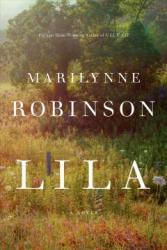
"Spread your wings over your servant, for you are a redeemer." Ruth 3:9
What happens when an old man, broken from years of suffering, looks into the face of a feral woman who has wandered into his church for shelter? In this moving story, he sees humanity in her face. He sees her loneliness and her sin-ravaged state, but he can see beyond that to a human being, near ruined, yet not beyond the hope of a redeemer. She is a person in need of compassion and comfort. He offers her a home for her world-weary frame. He marries her.
The story of Lila finds its poetic power in Robinson's unmatched ability to empathize with the human condition. Each page of this story is dripping with compassion and sympathy. The genius lies in how the very fabric of the story weaves a picture of the deepest desires of every human heart.
Lila, at her core, is a person in desperate need of protection and affection.
Here Robinson proves herself to be a master of symbolism. When a shawl was spread over the sickly, neglected, and dying toddler Lila, by a wretched woman overcome by compassion for an unloved child, this shawl and this memory become the defining features of Lila's life. And later, as a forsaken, hopeless, and forlorn grown woman, who has now lost the one person in the world who ever cared for her, Lila finds again someone spreading his dark suit jacket, the one he preaches in, over her freezing shoulders as they walk along the road. Lila says, looking back on that moment: "She thought it was nothing she had known to hope for and something she had wanted too much all the same." A covering, a home, protection. And again: "But if she had prayed in all the years of her old life, it might have been for just that, that gentleness. And if she prayed now, it was really remembering the comfort he put around her, the warmth of his body still in that coat. It was a shock to her, a need she only discovered when it was satisfied, for those few minutes." This story brings to life the theme that we often don't even know what to pray for and that mercy is so much bigger than our imagination.
Robinson is an author who truly understands how to express suffering, estrangement, loneliness, and courage in a breath-taking and lovely story of grace and redemption. She has a deep perceptiveness in the way she portrays the various motives that control the human heart and she writes with forthrightness and blazing accuracy. Read an be changed.
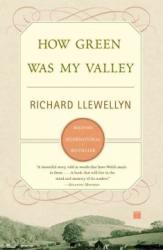
It would be extravagant for one to expect to come across such a book more than a handful of times in a lifetime. It is while reading a book like this that I am suddenly overcome with a desire to read less books, and to read only quality books and to read them more carefully. I would trade many stacks of books for this one pearl. I wonder that I have wasted so much of my time on so much drivel, when something so compelling was waiting to be read. I wonder that libraries and book stores are so crammed with piles of worthless pages, and stacks of pages, when buried beneath them all is a such a forgotten gem.
For every now and again comes along a writer who pulls back the veil from mundane life and reveals the mysteries and the wonder that we had forgotten were lurking all along. We are children again, humming along through the pages of this book, who see afresh the every day grandeur of a small mountain village, a loving family wading through pain and brokenness, sifting through the ideas of Marxism and socialism, trying to cling to tradition and faith.
We see a father and and his sons who love each other dearly but disagree fiercely; we long to live amongst the quaintness of tight-knit village living, but are revolted at the devastation caused by gossip and bitterness.
We become the young boy who is subject to grotesque treatment at an English school on account of the differences of dialect between the English and the Welsh. (This is so perplexing to Americans! Furthermore, the English treat the Welsh as though they are uneducated, uncouth barbarians, when in fact, the young boy taught himself advanced trigonometry while recovering from an illness, with the help from his older brother, a coal minor and an advanced mathematician himself.) But everywhere is beauty and freshness: the loveliness of the Welsh valley, the spirit of home and happiness, of merry-making and festivities. Not only does the Welsh valley echo with the clear song of joy and rejoicing, but the pages themselves ring with the notes of celebration that draw our eyes upwards from our shuffling feet, from looking at the day in and day out, to see brightness, clearness, the dawning of warmth, the tender meeting of souls, the sweetness of unbreakable family loyalties. These soul-swelling scenes are contrasted by the gruesome discovery of the ways of the world.
Only a few writers are given the vision to see and portray reality in all its starkness and splendor. Only a few know how to paint the picture only as they really see it, without any pretense or agenda. Only a few have the courage to detail all they see: the gruesome, the lovely, the perplexing; to look and to keep looking, and to record what they see in all its fullness.
Llewellyn blazes a trail for us all, to not only see, but to say; to not only know, but to tell. And in the telling, one comes to know more. We enter a small Welsh village 100 years ago, but we leave understanding our own spot on the planet a little better. We meet the Morgans but after having met them, we know our own friends, family, and neighbors, yes, even our own selves, a little better.
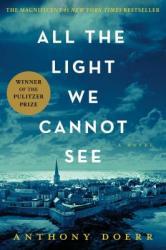
If All the Light We Cannot See were a movie, I would consider it “Oscar bait.” Set during the most romantic of World Wars: check. Main character with disability: check. Drama, tragedy, and suspense: check, check, and check. It’s then no wonder that All the Light We Cannot See ended up winning a Pulitzer. Sure, it’s filled with plenty of the “award” tropes that we tend to see repeated over and over again—but it works. What helps this book stand out from the rest of the books and movies that try too hard to earn awards is twofold: its characters and its plot.
Before I get too far into my praise for this book, I have to mention that the narrator for the audiobook version seemed to mispronounce a few words early on, which threw me for a loop and made me wonder if I’ve been mispronouncing them myself. Similarly, it was a little challenging to track the timeframes for some of the subplots, but the impact of the book was still the same. The author was able to paint a vivid set of lives set on opposite sides of a global conflict. From the blind French girl forced to survive on her own to the prodigious German boy with a penchant for radios and STEM, their internal and external conflicts were prime examples of gripping and engaging storytelling.
While there didn’t seem to be one primary driving plot in this book, the addition of the handful of subplots worked in concert to create a gem of a story (har har). These subplots were natural to the characters that embodied them, which helped to produce an amount of realism that held everything together. Everything just made sense, and even the semi-tragic ending was a satisfying end that left no subplot or loose end untied.
A beautiful piece of prose worthy of its Pulitzer, I give All the Light We Cannot See 5.0 stars out of 5.
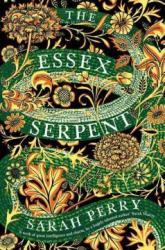
***THIS BOOK WAS RECEIVED FROM A GOODREADS GIVEAWAY***
It’s been a while since I’ve read a book as profound as The Essex Serpent. Perhaps it’s because they don’t write books like this anymore.
While written in the last few years, the style of The Essex Serpent is distinctly Victorian. It holds callbacks to the greats of gothic literature, including the physiological studies of Frankenstein and the back-and-forth letter writing of Dracula . All the while, the ever-present gloom of the muddy and foggy Essex shoreline hides the eponymous serpent just outside the reader’s view, providing anticipation of its reveal. Is the Essex Serpent real or is it a figment of so much imagination?
Of course, in staying with the Victorian style, the book does suffer somewhat in readability. The vocabulary and description are certainly more voluminous than modern volumes, but my biggest qualm seems to be more along the lines of the seemingly endless talk that occurs in the first half of the book—perhaps trying to mimic one of Jane Austen's romances—that only seems to be present for character exposition. There are also a few sub-plots that sound incredibly important, but don’t end up having much sway on the outcome of the plot.
Still, despite having to get used to the style, the characters and their drama is expertly crafted. In particular, the “friendship” between the widow Cora and the married clergyman Will was positively heart-pounding.
Cora’s son was delightfully peculiar, as was Will’s wife. If The Essex Serpent was more predictable, I’m sure the ending would have been different. I’ll have to settle for the conclusion as written, instead of having to read a more serious version of Sense and Sensibility and Sea Monsters . At least, the plot surrounding the Essex Serpent is exciting and was what kept me reading through the muddy first half.
A modern book expertly written in the Victorian style, I give The Essex Serpent 4.0 stars out of 5.
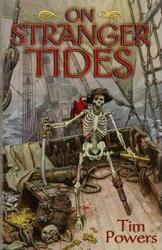
Since I knew the fourth Pirates of the Caribbean movie was based on this book, I decided to give it a read to see if it was any better than the so-so extension of the Pirates franchise. Let's just say that this book was a loose inspiration for the film. About the only elements that survived the transition were Blackbeard and the Fountain of Youth. Of course, even the movie version vastly improved the Fountain. In fact, I think I prefer the Pirates movie of the same name, even if the two don't share much in common.
I will say that On Stranger Tides does excel in its action sequences. The fights and battles are choreographed and described in such a way that is entertaining to read and comprehensible to understand. Unfortunately, a book full of fight sequences does not a good story make. Events in this book just seemed to happen, almost at random, and with no foreshadowing of what was to come. This made it difficult to follow, especially as the story seemed to jump from character to character, so I had to remember what was happening in each of the plotlines all at once.
I got the sense that this book didn't know what it wanted to be, mostly because it had so many main characters that it never had enough time to devote to any of them. Some of these characters never had clear motivations,
or if they did have goals and ambitions, they weren't revealed until much later in the book. The magic system could have been a little better fleshed out, as there didn't seem to be any consistent rules or reasoning behind the effects the magic created. Overall, I was mostly disappointed with what this book could have been.
Some good action sequences drowning in too many subplots, I give On Stranger Tides 2.5 stars out of 5.
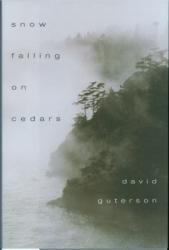
This was an amazingly written book with a centralized focus on a piece of history that is rarely paid much attention to. Focusing on the false trial of Kabuo Hiyamoto for murder, a Japanese-American man living on San Piedro Island, the book discusses prejudices harbored against Japanese people after WW2 and internment camps and tackles the idea of what is socially acceptable vs. what is morally correct. Guterson's writing style flows well and reads like an easygoing narrative, leaving most of the inferences and questioning to be made about morals to the reader. It questions human nature and the role of justice in vengeance, and leaves us wondering ourselves about humanity, with mixed feelings of both disgust at some of the characters and hope for the future.
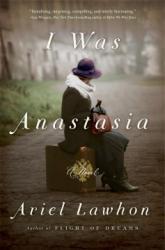
This dual-timeline story novel twists and turns until you are racing to the finish line. It tells the story of the Romanov family from the point of view of Anastasia. You travel with her from the revolution in 1917 to the family's assassination in July 1918. At the same time, you meet an elderly Anna Anderson, who is still trying to prove that she is the surviving Grand Duchess Anastasia. Anna's story is in reverse so as you are reading, she is moving back through her travels, various sponsors, lawsuits, and incarceration. The two stories meet at the end, solving the mystery as to what exactly happened to Grand Duchess Anastasia. The author is a beautiful writer and you will be transfixed by the story, no matter how well you know history! Another great title from Ariel Lawhon (if you haven't read her previous title, Flight of Dreams which is about the Hindenburg, I highly recommend it!).
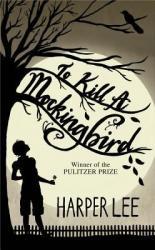
To Kill a Mockingbird by Harper Lee is an amazing story with important underlying themes. I really enjoyed this book. I read To Kill a Mockingbird on my own and then in class, which only made me appreciate the book more. The book explores controversial issues such as prejudice, racism, what it means to be a woman/lady, and growing up, which are all still relevant in today’s society. However, this is not a book for people who enjoy eventful/plot driven stories. To Kill a Mockingbird is more of a character-driven story (in my opinion). Harper Lee’s usage of symbolism, language and setting add to the enjoyment of the book. I could not recommend this book enough. To Kill a Mockingbird is a thought-provoking and classic book that everyone should read before they die.
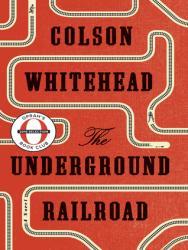
I listened to this book on audio, so I'm sure I missed bits and pieces. Cora's life as a slave in Georgia and through her journey on the underground railroad was fascinating. The depiction of the underground railroad as actually being an underground railroad was odd to me, but I'm sure there's some symbolism or other literary device that escapes me. Probably the most interesting part of this book was the section that took place in North Carolina. It was so indicative of the Third Reich that it was chilling. I found the ending to be abrupt, but still overall an interesting read.
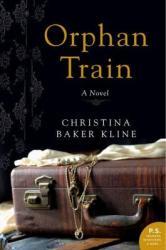
"Orphan Train," a touching novel featuring the life stories of orphans in the mid 1900's, explores the importance of friendship and the need for human belonging. This book is a novel that you will remember for awhile. It is also a quick read; a page turner leaving you completely satisfied. This novel is well-written and excitement awaits every chapter. Vivian Daly is orphaned at a young age and is sent away on the famous 'orphan train.' The book unfolds her story; but in between a new character is introduced. Molly Ayer, a girl who needs to do service hours to earn her reputation back, meets Vivian and they instantly connect. Both women tell their stories, and each are left well educated and have a new friend. "Orphan Train" emphasizes the innocence of children and how society's actions can impact the lives of those innocent children. This book is available in a young reader's format, "Orphan Train Girl", which is better adapted for a younger audience. "Orphan Train" does include a few inappropriate scenes; mostly sexually. If you love a historical novel, touching reads, and a tremendously good book, "Orphan Train" is for you.



 Ruth Holley Library will be temporarily closed for approximately one week starting Mon., Dec. 2 to complete roof repairs.
Ruth Holley Library will be temporarily closed for approximately one week starting Mon., Dec. 2 to complete roof repairs.